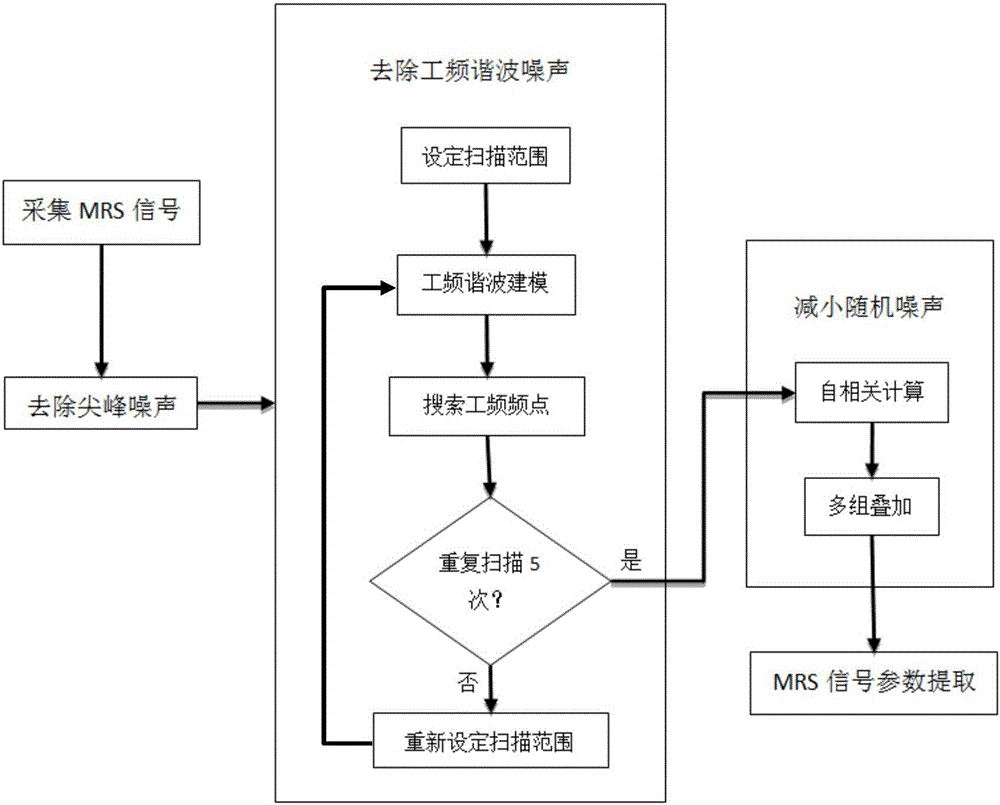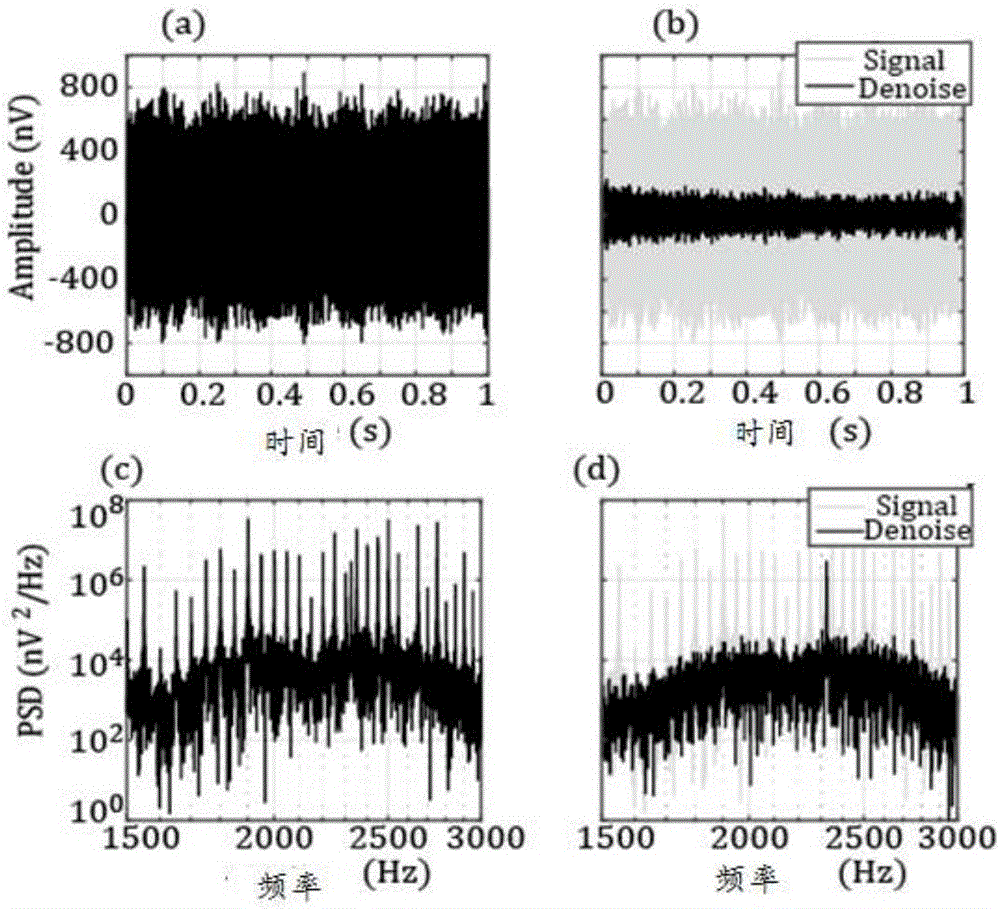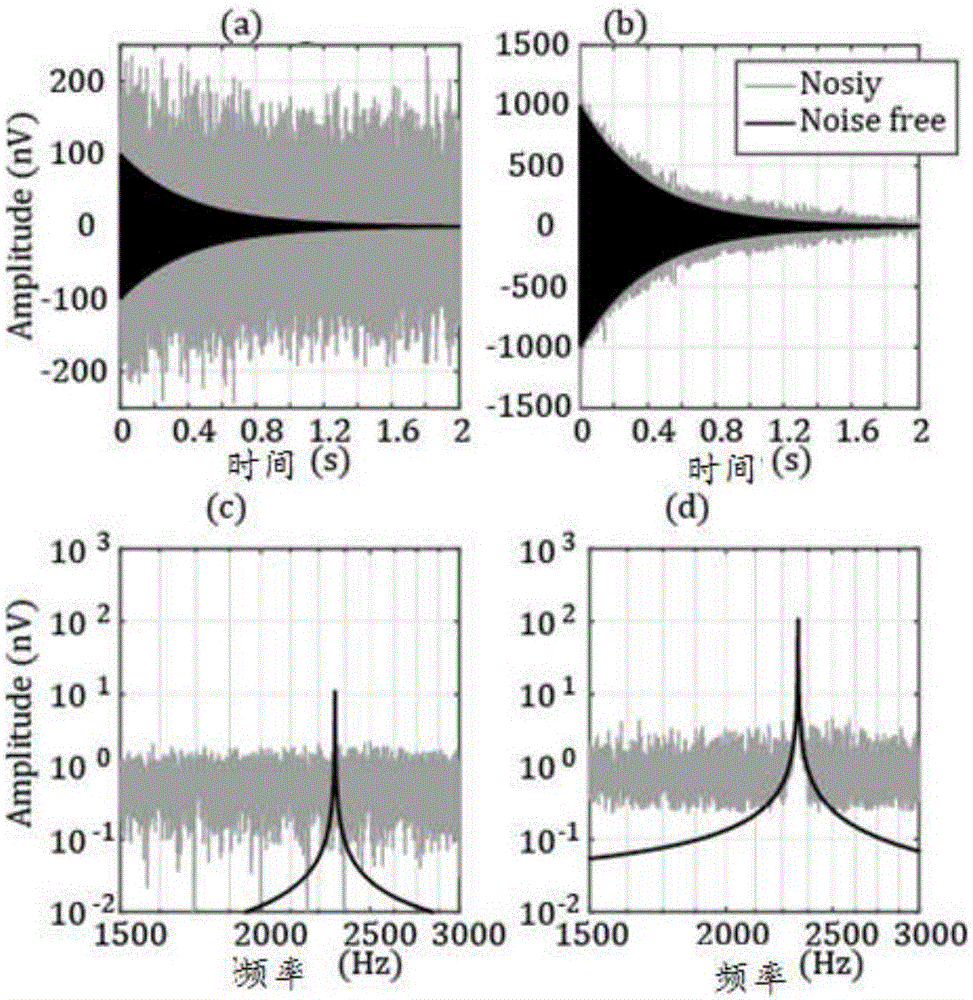Method for extracting surface nuclear magnetic resonance signals
A ground nuclear magnetic resonance and signal extraction technology, which is applied in geophysical surveying, electric/magnetic exploration, and re-radiation, to achieve the effect of small fitting error and saving manpower and material resources
- Summary
- Abstract
- Description
- Claims
- Application Information
AI Technical Summary
Problems solved by technology
Method used
Image
Examples
Embodiment 1
[0082] Based on power frequency harmonic modeling and autocorrelation ground nuclear magnetic resonance signal extraction method, the present invention simulates a group of measurement data sets that include 16 independent acquisitions, refer to figure 1 , including the following steps:
[0083] Step (1): Use formula (3) to construct the noisy MRS signal as Figure 5 As shown in (a), its parameter is e 0 =100nV, f = 2326Hz and The fundamental frequency of the harmonic noise collected each time is randomly generated at 49.9-50.1Hz, the number of harmonics is 100, and the harmonic amplitude is randomly distributed within 200nV; the random noise collected each time is Gaussian white noise of 200nV; Spike noise is added, assuming all spike noise has been removed by existing methods.
[0084] Step (2): Use the harmonic modeling method to obtain the power frequency harmonic model where f 0 =50.018125Hz, subtract the power frequency harmonic model from the noisy MRS signal t...
Embodiment 2
[0088] In this example, the ground NMR groundwater detection instrument independently developed was used for field data collection near the Taipingchi Reservoir in Shaoguo Town, Nong'an County, Changchun City (the geomagnetic field is 54720nT, the corresponding Larmor frequency is 2330Hz, and the variation range is less than 2Hz). Experiment with data processing. In order to detect the aquifer from shallow to deep, 20 sets of transmission pulse moments were set according to the logarithmic distribution in the range of 0.2-8.5As, and each set of pulse moments was repeated 16 times, and the sampling rate was 50kHz. The acquisition time is 1s. The MRS signals collected at the 10th, 16th and 20th pulse moments are taken as the processing objects of the method of the present invention. Such as figure 1 Shown, based on power frequency harmonic modeling and autocorrelation ground NMR signal extraction method, comprises the following steps:
[0089] Step (1): Utilize the ground nuc...
PUM
 Login to View More
Login to View More Abstract
Description
Claims
Application Information
 Login to View More
Login to View More - R&D
- Intellectual Property
- Life Sciences
- Materials
- Tech Scout
- Unparalleled Data Quality
- Higher Quality Content
- 60% Fewer Hallucinations
Browse by: Latest US Patents, China's latest patents, Technical Efficacy Thesaurus, Application Domain, Technology Topic, Popular Technical Reports.
© 2025 PatSnap. All rights reserved.Legal|Privacy policy|Modern Slavery Act Transparency Statement|Sitemap|About US| Contact US: help@patsnap.com



